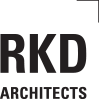Architecture and Engineering (AE) practices more and more reach out to the available projects all over Europe. Main reasons for this are the increased integration of Europe as a continent: better, more affordable and more travel connections are developed. Increased IT cloud services and better broadband connections have significantly improved communication methods such as teleconferencing, online meetings and file sharing.
In Ireland this is particularly the case because of the amount of headquarters of main IT and pharma multinationals who wish to spread their wings over the EMEA region, but wish to stick with their local design and consultants who they trust and are closer to home. As well, the economic downturn has fed the entrepreneurial skill of Irish businesses to develop and sell their skills abroad.
It is clear that the opportunities are out there, however in the end, it is still the architect and the engineer who will develop the design (for the most part) in Ireland but the actual project will be developed outside the island. This is where true engineering and architectural skills become important because sometimes for just one project the designer, consultant or contractor needs to fully understand the local situation. How does this localisation work and what challenges can teams expect during the different steps in the design and construction process?
Local Design Interpretation
As a base rule it is important to realise that the Irish design team has to fit into the local situation, with its unique rules and habits. It is essential to fully understand the laws of the land and investigate the code requirements that a project has to comply to. Design teams mainly operating in one country tend to rely on automatisms: design solutions are no longer questioned as they are fixed in regulations or regarded as best practice. In most cases this is a very safe and appropriate practice as it allows design teams to fast and efficiently develop schemes in a competitive setting.
However, what happens when bringing skills outside of Ireland? Suddenly a designer or consultant is in a situation where Irish Building regulations have no standing: TGDs or NRA DMRBs have become meaningless, and virtually every design decision can be questioned…
…And every design decision will be questioned, if not by design leads, then by clients or local authorities. It is therefore critical that when developing business abroad that in some form, local knowledge is added to the design team. This can be by having a native on the team or a sub consultant who performs peer reviews. Recurring design coordination reviews are critical for a successful project.
European Standardisation
In an attempt to encourage trading within the European Union all national standards are gradually being replaced by Harmonised European standards (hEN). These standards already cover most of construction products and are the basis for the European product branding: the CE mark. The CE mark is required to be placed by (in principle) the manufacturer on a product which is a guarantee by the manufacturer that the product has been made and tested in according with the relevant hEN standards. This should be accompanied by a performance cert which highlights the relevant hEN’s that apply and the main performance criteria. Where a hEN exists, a CE mark is legally obligated in any EU country.
This European regulation is of vital importance when bringing knowledge abroad. Specifications of products based on experience are now equally applicable in other countries. For design teams it now becomes possible to set out performance criteria and have them relate back to a European standard, something that will mean exactly the same anywhere in the EU.
It is important to note that not all construction products are covered by a hEN. The difficulties lie within these grey areas where for example in Ireland a local IS code sets out requirements but elsewhere a foreign code may not exist. In those cases it is of vital importance to liaise with local specialists on the situation.
On top of the hEN or local code it is always possible for a designer (should a client want this) to specify criteria set out in a standard that is not of the native country, as long as it doesn’t contradict local code. In such cases AE teams need to be able to give full details on the specs as local consultants or contractors will not be familiar with this.
Statutory Compliance
For several reasons the ability to have team members who speak the local language is critical:
- The interpretation of local zoning plans, building regulations and standards
- The application for permits
- Communication with the local authorities.
In some cases very flexible and cooperating authorities will be involved, but in order to keep them on board they need to be approached in their own language.
From personal experience it is advised to maintain a very proactive approach to the local authority. It shows engagement, commitment to include them in the process, and a willingness to understand the local situation. This is the case when doing project at home, but even more when going abroad.
The types of statutory compliances can differ greatly per country and situation. In the Netherlands for example, there is a completely separate layer of authority with the sole purpose of management of the water in the region: the so called water boards/water authorities. They require a separate permit/notice, even if no significant changes to waterways are made. In many countries there is also an aesthetic committee who decide how a design fits in an environment and may have a separate set of requirements. It is critical to be aware of these different permits and their requirements.
Health and Safety
Everyone in the world will agree that construction needs to be safe, and that this is the responsibility of all the members in the design and construction team. The fact is however, that within Europe the construction industry has one of the worst H&S records. This is mostly due to the physical nature of the labour, the exposure to different hazards and weather types and use of heavy machinery. The European Directive 92/57/EEC sets out the ground works for a common H&S approach. Following this directive, roles such as PSDP, PSCS, client, designer and contractor have similar descriptions and responsibilities in member states. However, where on legislative level there is agreement on responsibilities, the implementation level local traditions seem to keep the upper hand. Both designers and contractors, especially when focusing on local project, may not in touch with European Directives or best practise, they fall back to “how we have always done it”.
There is a lot to say for using trusted and proven techniques, but H&S standards we know today stand in no comparison to those from the past. The Irish construction industry with its well defined roles and duties and solid follow up scheme can serve as example for projects in the European area. Needless to say, there is a challenge for Irish designers and contractors to optimise local H&S practises based on the Irish model.
Conclusion
All in all it can be concluded that Irish design and construction practises can offer added value for projects within Europe. Irish health and safety standards are of very high quality compared to most member states, and specifically in this area the Irish methods can contribute to safer construction projects abroad. Irish businesses are well used to a thorough statutory compliance process and the fact that English is the main spoken language in Ireland ensures good communication lines generally with local teams. Continued efforts in the development of European standards open up new markets for suppliers which makes the application and specification of these products in the EU easier.
Doing business abroad is exciting, it allows the engineers and architects to question their core competencies while developing experience and network. Developing business abroad however does come with its challenges, and pitfalls, however with proper management, communication and sharing of information and local representation these can be avoided.

